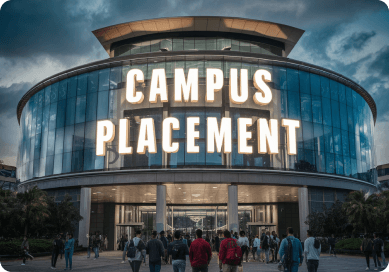Enter OTP



Maisons-Alfort, France

Maisons-Alfort, France

Cost Of Living

Undergraduate Fees International Students

Post Graduate Fees International Students

The École Nationale Vétérinaire d’Alfort stands out for its legacy as one of the world’s oldest veterinary schools, founded in 1765. Operated by France’s Ministry of Agriculture, it combines historical depth with scientific innovation. The school is known for pioneering cold and liquid ventilation techniques to reduce medical risks. Its unique focus on anatomical and natural history specimens enriches both teaching and research. The campus houses rare resources like a veterinary museum and botanical garden, adding to its academic richness. With a strong emphasis on public service and global exchange, ENVA shapes leaders in animal health.
Nocard graduated from ENVA in the late 19th century and became a pioneering microbiologist. He is best known for discove... View More
Nocard graduated from ENVA in the late 19th century and became a pioneering microbiologist. He is best known for discovering the bacterial genus Nocardia, responsible for nocardiosis in animals and humans. He laid foundational work in equine and bovine infectious diseases, established diagnostic labs, and consulted for the Pasteur Institute. His contributions helped professionalize veterinary microbiology in France and shaped public health approaches to zoonotic disease. View Less
Guérin trained at Alfort before collaborating with Albert Calmette to develop the BCG vaccine against tuberculosis. His... View More
Guérin trained at Alfort before collaborating with Albert Calmette to develop the BCG vaccine against tuberculosis. His role in immunology was crucial—he brought veterinary scientific rigor to vaccine production, helping adapt bovine-derived strains for human use. The BCG vaccine remains one of the world’s most widely administered vaccines. Guérin’s legacy bridges veterinary science and global human health View Less
A graduate of Alfort in 1892, Carré became a leading veterinary microbiologist. He discovered the viral causes of two m... View More
A graduate of Alfort in 1892, Carré became a leading veterinary microbiologist. He discovered the viral causes of two major diseases: equine infectious anemia and distemper in dogs (disease of Carré). He directed the French National Veterinary Research Laboratory and worked closely with the Pasteur Institute. His work advanced diagnostics and shaped preventive measures in veterinary medicine, earning him high honors in France. View Less
After completing studies at ENVA, Bouley helped transform veterinary practice into a respected science separate from bla... View More
After completing studies at ENVA, Bouley helped transform veterinary practice into a respected science separate from blacksmithing roots. He co-founded the Société Centrale Vétérinaire and helped establish the professional journal Recueil de médecine vétérinaire. As a clinician and scholar active in academic circles, he elevated the standards and structure of veterinary education in France View Less
Alfort alumnus and bacteriologist, Ramon made key contributions to anti-toxin therapies. He developed methods that impro... View More
Alfort alumnus and bacteriologist, Ramon made key contributions to anti-toxin therapies. He developed methods that improved diphtheria and tetanus vaccine potency, including chemical detoxification of toxins—advancements that underlie modern vaccine safety and efficacy protocols. His work directly impacted public health and shaped modern immunology. View Less
Bressou joined Alfort’s faculty as a professor of anatomy and became its director from 1934 to 1957. A naturalist and ... View More
Bressou joined Alfort’s faculty as a professor of anatomy and became its director from 1934 to 1957. A naturalist and zoologist, he was instrumental in promoting conservation and educating generations of veterinarians. Decorated with multiple national and international honors, he combined scientific rigor with public outreach and institutional leadership. View Less
An ENVA graduate who later transitioned into business leadership, Sir Pascal Soriot became CEO of AstraZeneca. He led ma... View More
An ENVA graduate who later transitioned into business leadership, Sir Pascal Soriot became CEO of AstraZeneca. He led major developments in pharmaceuticals and steered the company through critical innovation periods. His veterinary training gave him a unique perspective on translational science and global health challenges beyond clinical practice. View Less
Bomsel earned her doctorate at Alfort and went on to become a professor at the French National Museum of Natural History... View More
Bomsel earned her doctorate at Alfort and went on to become a professor at the French National Museum of Natural History. Known for her expertise in wildlife veterinary medicine, she regularly appears on television as an expert on animal behavior and conservation. She also serves as president of the Jane Goodall Institute France, bringing scientific insight to public environmental action View Less
Born in Senegal, Gaye studied at ENVA before returning home where he served as Foreign Minister (1968–1972) and held m... View More
Born in Senegal, Gaye studied at ENVA before returning home where he served as Foreign Minister (1968–1972) and held military and diplomatic roles. His background in veterinary science informed his public health policies in a newly independent nation. He exemplifies how veterinary training can intersect with governance and global diplomacy View Less
Bizet graduated from ENVA before entering politics. He represented Manche in the French Senate from 1996 to 2020 and cha... View More
Bizet graduated from ENVA before entering politics. He represented Manche in the French Senate from 1996 to 2020 and chaired the European Affairs Committee. His agricultural and veterinary background informed debates on EU livestock policy, public food safety, and farm regulation. As a teacher of practical knowledge, he bridged science and legislative oversight. View Less
The École Nationale Vétérinaire d’Alfort boasts a historic yet modern campus with state-of-the-art laboratories, advanced surgical and diagnostic units, and a renowned veterinary teaching hospital. Its anatomy museum, one of the oldest in the world, houses rare specimens for student research. The university features specialized buildings for equine, companion animal, and livestock care. Modern classrooms are equipped for digital and interactive learning. A large animal facility supports hands-on clinical training. Green open spaces and dedicated research zones reflect its blend of tradition and cutting-edge veterinary science.
Student life at École Nationale Vétérinaire d’Alfort blends rigorous academics with vibrant community living. From veterinary-themed clubs to sports tournaments and cultural events, there’s always something happening on campus. Students often collaborate on research projects, animal care, and outreach programs, building both skills and friendships. The campus is pet-friendly and has green spaces that create a welcoming environment. Celebrations, student-led initiatives, and inter-school fests add color to the experience. It’s a close-knit, passionate community of future vets who live, learn, and grow together.


École Nationale Vétérinaire d’Alfort offers dedicated career guidance tailored to veterinary and animal health fields. Students get personalized counseling, CV and interview prep, and access to internship and job boards specific to veterinary medicine. Regular workshops and corporate presentation sessions introduce students to clinics, biotech firms, research labs, and public health organizations. Alumni networks actively connect graduates with mentors and job opportunities in France and abroad. The career team also helps with doctoral or continuing education planning. It’s a system designed to transform academic training into real-world veterinary careers.
The below information is required while
completing the university application :
Key documents typically required for admission into the Bachelor’s program at École Nationale Vétérinaire d’Alfort (ENVA):
High School Diploma or Equivalent
Proof that you’ve successfully completed secondary education, preferably with a science focus (biology, chemistry, physics).
Academic Transcripts
Detailed marksheets from your last three years of school, showing performance in science and general subjects.
Proof of French Language Proficiency
Since most undergraduate programs are taught in French, you’ll need DELF B2, DALF C1, or TCF scores to show your language level.
Curriculum Vitae (CV)
A concise 1-page CV highlighting your education, extracurriculars, volunteer experience (especially in animal care), and academic interests.
Motivation Letter
A letter explaining why you want to study veterinary medicine, why ENVA, and what you hope to achieve in your career.
Passport or National ID Copy
An official identification document for verification purposes.
If you're planning to apply and want help writing the motivation letter or building a strong CV, just say the word.
Know moreThe École Nationale Vétérinaire d’Alfort recruits a range of professionals through both public service exams and direct contracts. Positions span veterinary assistants, lab technicians, administrative staff, and facility maintenance roles. The school values inclusion and transparency in its hiring, following its Alfort+ charter. It also offers internship opportunities for students, which often serve as stepping stones to full-time roles. With a dedicated HR system and ongoing professional development, ENVA ensures its team stays skilled and motivated. Around 400 staff members currently support its teaching, clinical, and research work on campus.



The École Nationale Vétérinaire d’Alfort, founded in 1765, stands as a pioneer in veterinary science. It developed cold and liquid ventilation techniques to reduce clinical risks—an innovation that reflects its commitment to research and advancement. The school’s vast anatomical and natural history collections continue to support teaching and discovery. Its alumni, including figures like Edmond Nocard and Marie-Claude Bomsel, have left lasting marks in the field. With state-of-the-art clinical facilities and a global outlook, ENVA blends tradition with forward-thinking science to remain at the forefront of veterinary achievement.


In recent ranking and institutional reviews, ENVA’s teaching hospital (CHUVA) has been identified as one of Europe’s most active veterinary hospitals, serving tens of thousands of cases annually across companion animals, equines, livestock, and wildlife. With around 35,000 procedures a year, 24/7 services, and integrated training and research platforms, ENVA demonstrates how clinical excellence supports both learning and public service delivery
Between 1996 and 2013, ENVA produced landmark publications—like Guého et al. (1996) describing four new Malassezia species (854 citations), Badoual et al. (2013) on tumor-infiltrating T‑cells (571 citations), and Boulouis et al. (2005) on zoonotic Bartonella (468 citations). These high-impact studies highlight ENVA's research excellence in microbiology, immunology, veterinary internal medicine, and One Health collaborations
Emmanuel Leclainche, graduated from ENVA and active in the early 20th century, spearheaded efforts that led to creation of the Office International des Épizooties (later OIE) in the 1920s. This global body coordinates international animal health responses, disease monitoring, and trade regulation. His vision, rooted in veterinary science and global health, helped form one of the key institutions for coordinated epidemic prevention worldwide
In 1921, alumnus Camille Guérin collaborated with Albert Calmette to develop the Bacillus Calmette–Guérin (BCG) vaccine against tuberculosis. Using insights shaped by veterinary microbiology and animal models, the vaccination strategy began with Mycobacterium bovis. The BCG vaccine has since prevented countless human and animal cases of TB worldwide, showing ENVA’s reach into global public health
During the 1920s and 30s, ENVA alumnus Gaston Ramon developed chemically detoxified diphtheria and tetanus toxoids. These anatoxins were safer and more effective than earlier toxin vaccines. Ramon’s innovations formed the scientific basis for modern immunization practice. His work built on ENVA’s immunological and microbiological strengths, ultimately saving countless lives in both veterinary and human medicine
In 1904–1905, Henri Joseph Carré—an ENVA graduate—identified viral causes behind equine infectious anemia and canine distemper (the “maladie de Carré”). His research at the National Veterinary Research Laboratory at Alfort laid early groundwork for viral pathology in animals. Carré’s legacy is foundational to modern veterinary virology and zoonotic disease control, highlighting ENVA’s research leadership
On March 3, 1814, ENVA students and staff formed the “bataillon d’Alfort” and joined regular troops to defend the Charenton bridge against invading Allied forces. This act demonstrated their discipline, resolve, and commitment. It marked a rare moment when veterinary students served directly in a national military defense action, blending academic rigor with civic duty
Between 1766–1771, anatomist Honoré Fragonard—recruited by Bourgelat—prepared thousands of anatomical specimens for teaching. His precise injection, dissection, and preservation transformed veterinary anatomy education. The resulting museum remains one of the world’s oldest and most impressive collections, still used for pedagogy and historical scholarship today
In 1765, under royal and scientific guidance, Claude Bourgelat established ENVA as one of the world’s first veterinary schools—specifically to combat devastating livestock epidemics like rinderpest. He fused comparative anatomy, chemistry, clinical medicine, and natural history into its teaching. ENVA became the cradle of modern veterinary science. This founding moment created a structured, scientifically informed profession previously rooted in craft traditions
Around its founding era, ENVA’s emergence gave rise to the term “vétérinaire” from Latin veterinarius (“one who cares for beasts”). This linguistic milestone reflected the professionalization of animal care. ENVA’s role in standardizing training and terminology helped shape veterinary medicine’s identity and legitimacy across France and Europe
ENVA champions innovation in animal care—most notably developing cold and liquid ventilation techniques to lower clinical risks. Its long-standing collections of anatomical and natural history specimens serve as both educational tools and research assets.Research efforts focus on veterinary medicine, comparative anatomy, and public health applications. ENVA combines historical expertise with modern lab work to push boundaries in diagnostics and treatment. Collaborative projects and international exchanges fuel fresh perspectives and accelerate scientific progress. All told, innovation at ENVA evolves from a deep heritage, rigorous training and a drive to shape future leaders in veterinary science.
Since 2016, through DIM‑1HEALTH, ENVA co‑developed vaccine strategies with an integrated One‑Health lens combining animal, human, and environmental health. This initiative promotes new diagnostic frameworks, anti‑infective therapies, and social‑economic perspectives in prevention. Although not a patented single device, the program represents an ongoing innovation in vaccine design, epidemiological models, and translational therapeutics. ENVA’s role in the European “One Health” movement underscores its leadership in integrative research—bridging disciplines to address infectious threats from livestock to humans under changing climate and population pressures
On December 1 2015, ENVA co-held a patent for a bone substitute cement composed of calcium‑phosphate biomaterial combined with an analgesic agent. This invention targets bone‐filling in iliac crest defects, dental implants, or tissue engineering scaffolding. By blending osteoconductive cement with pain management, it offers integrated post‑operative relief and tissue regeneration. ENVA’s contribution reflects deep anatomical understanding, orthopedic knowledge, and biomaterials research. It opens possibilities in veterinary and human surgery, especially for repairing bone injuries where both structural support and analgesia are vital to recovery.
In 2013, researchers linked to ENVA co-invented identification methods for the human gyrovirus (HGyV), a virus structurally related to chicken anemia virus. They characterized HGyV proteins like H-apoptin and developed detection protocols potentially useful for cancer therapy or diagnostics. Though co‑assigned with Institut Pasteur, this patent—filed late 2011 and published early 2014—involved ENVA-based microbiological expertise and assay design. It represents ENVA’s translational reach into viral oncology and molecular virology. The work bridges veterinary virology, comparative pathogens, and emerging applications beyond classical animal health.
Between 2000 and 2004, ENVA veterinary surgeons and researchers developed and evaluated a 3.5 mm titanium interlocking nail (IN) to stabilize supracondylar and diaphyseal femoral fractures in cats. This device allowed retrograde insertion through the intercondylar notch with static screw fixation. In a study of 24 fractures, 19 healed without complications and most cats regained excellent limb function. This surgical innovation improved feline orthopedic repair protocols. It reflects ENVA’s bench‑to‑clinic translation, addressing real-world fracture stabilization in small animal veterinary medicine with precision design and follow-up.
Founded in 1999 in Normandy, the CIRALÉ center is part of ENVA’s equine research hub. It houses advanced imaging for locomotion disorders in sport horses and integrates biomechanics, neuromuscular research, and reproductive biology. While not a single invention, CIRALÉ has produced diagnostic protocols and therapeutic techniques that revolutionized equine medicine—especially in representing the interplay of veterinary physiology and engineering. The center’s research units (BPLC, B3OA, BREED, PROTECT) have led innovations in imaging-based diagnostics, treatment planning, and performance medicine for horses globally. It’s a living innovation platform.
In 1983, ENVA researchers published on using secondary ion emission techniques to detect metal contaminants in the mammary glands of animals. This advanced analytical method improved precision in studying toxicological exposure and physiological trace metal distribution. It expanded veterinary toxicology into high‑resolution biophysical measurement. While largely academic, its implications extend to food safety, animal welfare, and environmental monitoring. It illustrates ENVA’s willingness to adopt cutting‑edge chemical physics tools into veterinary research—pushing the boundaries of diagnostic sensitivity and interdisciplinary science
In 1921, Camille Guérin—an alumnus and associated researcher at ENVA—partnered with Albert Calmette to develop the BCG vaccine against tuberculosis. This breakthrough involved attenuating Mycobacterium bovis to create a live vaccine safe for humans and cattle. ENVA’s veterinary researchers contributed critical animal-based insights to grow, test, and validate the strain. The vaccine’s success marked a dramatic turning point in TB prevention, saving millions of lives worldwide. Guérin’s deep veterinary microbiology background—honed at ENVA—was essential for this translational leap from animal pathogen to global human health intervention.
Gaston Ramon, an ENVA alumnus, invented chemically detoxified vaccines—anatoxins—for diphtheria and tetanus during the 1920s–30s. These modified bacterial toxins maintained antigenicity but lost toxicity, enabling safer immunization. Ramon’s protocols improved vaccine consistency and safety, laying the groundwork for modern toxoid vaccines used worldwide. ENVA’s environment of veterinary immunology and microbiology research nurtured Ramon’s rigor and experimentation. Today’s diphtheria‑tetanus (DT, DTP) vaccines trace their lineage to his work. The contribution is both veterinary and public‑health centric, rooted in pathogen science and preventive medicine.
In the mid‑20th century, ENVA researchers developed cold and liquid ventilation methods to lower clinical risks during respiratory therapy in animals. This innovation represented a significant shift in veterinary respiratory care—using cooled and oxygenated liquid media to support gas exchange in compromised lungs. By minimizing conventional mechanical ventilation side effects, this method enhanced survival in critical care settings. ENVA researchers combined physiological insight with technical rigor, leading to a practical advancement that informed both veterinary and comparative human medicine approaches. The technique underscored ENVA’s role in practical clinical innovation rooted in deep anatomical and physiological expertise.
In 1898, Edmond Nocard—trained and later teaching at ENVA—identified a novel bacterial genus later named Nocardia, the cause of nocardiosis in animals and occasionally humans. His systematic studies in microbiology and pathology at ENVA established methods for isolating and classifying Gram-positive filamentous bacteria. Nocard also founded diagnostic laboratories and refined our understanding of zoonotic infections. His work underpinned modern veterinary bacteriology and informed human infectious disease practice. What this means is that ENVA directly contributed a foundational taxonomic and diagnostic advance still relevant in vaccine and antibiotic development over a century later.

Embark on your educational journey with confidence! Our team of admission experts is here to guide you through the process. Book a free session now to receive personalized advice, assistance with applications, and insights into your dream school. Whether you're applying to college, graduate school, or specialized programs, we're here to help you succeed.
